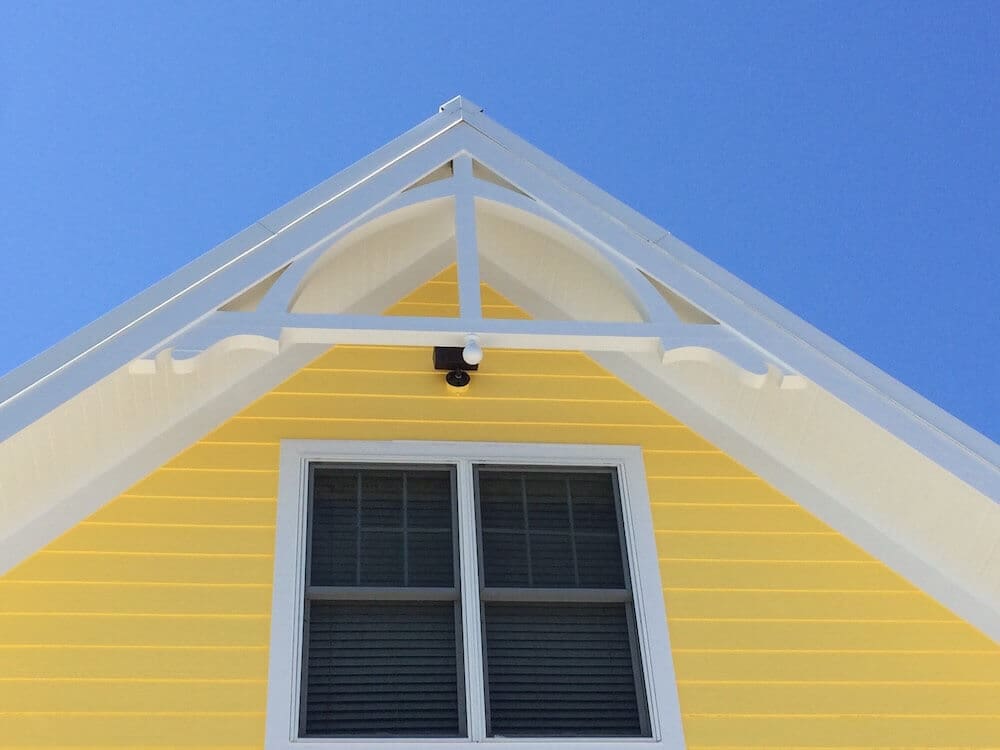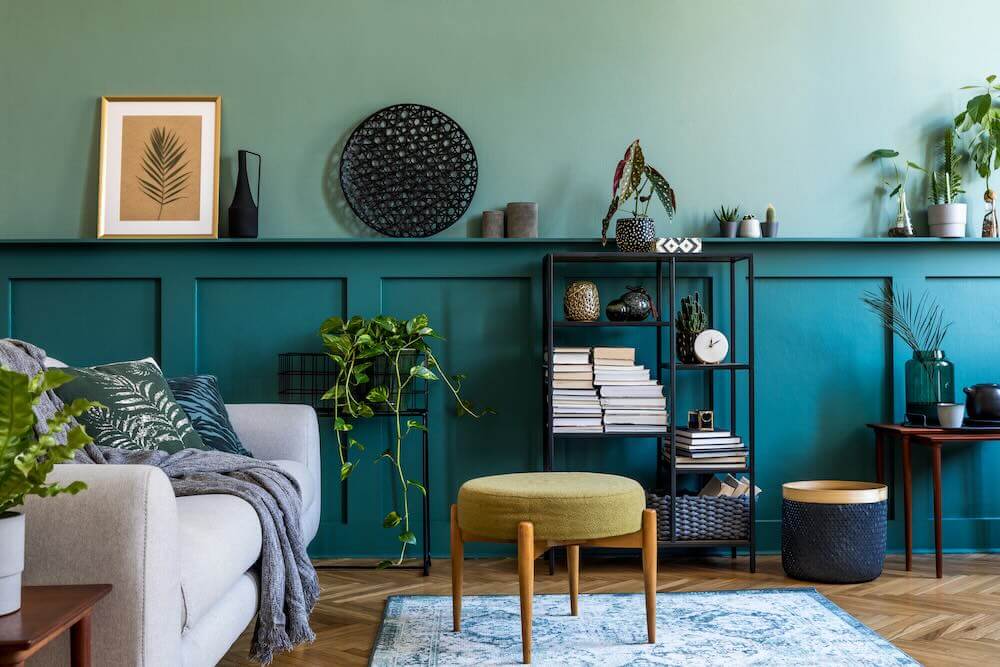
Factors to Consider When Selecting Colors for Interior Painting
Table of Contents
Selecting interior paint colors is an art. The colors you choose for your space can influence your mood, alter your perception of space, and fundamentally transform your living environment. Choosing the right color can be a daunting task, but it’s not an impossible one. This blog explores key considerations when deciding what color to paint the interior of your house.
Personal Preferences
When considering what color to paint interior of house, it’s vital to reflect on elements like personal style, room functionality, light conditions, and architectural features. Your taste and personal style should be your initial guides when selecting interior house paint. Your preferences should take center stage in your decision-making, whether you’re inclined towards bright, lively hues or more subdued, tranquil shades. However, personal preference is just the starting point. It’s essential to understand how to harmonize your favorite colors with other interior design elements.
Consider popular interior paint colors for inspiration. Magazines, online blogs, and home decor stores can give you an idea of current trends and color schemes that might appeal to you. Countless options are available, from cool color palettes, often found in modern minimalist designs, to warm, inviting shades that characterize traditional decor.
Additionally, consider the impact of wall colors on your existing or planned furniture and decor. An accent wall, for example, can create a dramatic focus in a room, and its color should complement your furnishings. Alternatively, a neutral color scheme can provide a ‘blank canvas,’ allowing more vibrant, colorful furnishings to pop.
Each room presents a unique opportunity to express your style. Whether you choose to follow trends or create your own, keep in mind that personal preference should always be your guiding star in the adventure of selecting your interior house paint.
Lighting
Lighting is crucial in how a paint color appears in your home. The same color can look dramatically different under natural, incandescent, or LED lighting. It’s vital to understand the light conditions of your space before deciding what color to paint the interior of your house. Remember to consider the direction your windows face, the amount of natural light they let in, and the types of artificial light used in the room..
Room Size and Function
When thinking about how to choose interior paint type, consider the room’s use, the condition of the walls, and the desired finish, as these factors impact the final look and longevity of the paint job. Room size and function play significant roles in the choice of your interior house paint. Light colors make a small space feel larger and brighter, while dark colors create a cozy, intimate vibe. The room’s function also matters – a lively color might be ideal for a living room, while soothing tones could be more fitting for bedrooms.

Architectural Elements
Architectural elements can serve as a guide on how to choose the interior paint type and color. Pay attention to the elements you wish to highlight, such as a fireplace or intricate molding, and select colors that will emphasize these features. Conversely, if there are architectural aspects you wish to downplay, choose colors that blend with those elements.
Furthermore, the era and style of your home’s architecture can significantly influence your color choices. For instance, a Victorian-style home might invite a more traditional, rich color palette, while a modern, minimalist home could suit a set of sleek, monochromatic shades. Remember that your interior paint colors should not just add aesthetic value but also respect and enhance the architectural integrity of your home.
Consider the material of your architectural elements as well. Features like exposed brick walls, wooden beams, or marble countertops have unique tones and textures. The right paint color can complement these elements, harmonizing your space’s overall design.
Lastly, don’t forget about the ceiling, often referred to as the “fifth wall.” Painting your ceiling a different color or shade can dramatically transform a room’s feel. A lighter ceiling can open up a space, making it feel larger, while a darker ceiling can create an intimate, cozy atmosphere.
Choosing the right color for your architectural elements can elevate your interior design, turning your house into a well-crafted, cohesive home.
Color Combinations and Schemes
The art of choosing interior paint colors extends beyond selecting a single shade. It involves creating a color scheme that promotes harmony in your space. Complementary colors create a vibrant look, while analogous colors offer a more serene and comfortable design. Neutral colors provide a balanced backdrop, allowing your furnishings and decor to take center stage.
When planning your color scheme, the character of individual rooms should guide your decision. For example, dark blue or deep burgundy are classic shades often used in dining rooms to create an ambiance of elegance and sophistication. Paired with bright white trim, this combination can draw attention to architectural details and add dramatic contrast to the interior walls.
You might opt for colors with green undertones in living rooms or bedrooms, creating a serene and relaxing atmosphere. These colors harmonize well with natural elements, such as wooden furniture or indoor plants, creating a cohesive look.
Whatever your choice, remember to consider the interplay of colors across different rooms. A well-coordinated home that flows with a color scheme creates a sense of harmony and unity, making it a joy to live in and a delight to visit.
Sample Testing and Swatches
Before committing to a color, testing the interior house paint in your home’s environment is crucial. Paint swatches, sample boards, or small test areas on your walls can help visualize the colour’s appearance under varying light conditions. This way, you can see how the color interacts with the room before making a final decision.
When selecting paint samples, visiting a paint store such as Sherwin Williams will give you an idea of the extensive array of color swatches available to help you decide. With an extensive color palette to choose from, you can explore different shades and hues in the comfort of your home. If you’re feeling overwhelmed, consulting with an interior designer can be beneficial. They bring a wealth of knowledge and can help you navigate the process, understanding the impact of different tones and color psychology on your space. Professionals often have sample books, swatches, and even digital tools to visualize how the paint will look in your home, providing you with an extra layer of certainty in your color selection journey.
Summing Up the Color Journey
Choosing the right colors for your home can be both exciting and overwhelming. Professional Painters in Rhode Island suggest that the best interior paint colors are those that reflect your style, resonate with your mood, and harmonize with your home’s unique characteristics. For expert guidance in this process, consider employing interior painting professionals.
Professional Painters in Connecticut emphasize the importance of creating a cohesive look that enhances your home’s overall ambiance. Professional Painters in Massachusetts recommend experimenting and expressing your personal style without fear.
At PrepSmart Painting, we offer comprehensive interior and exterior painting services to help you create the perfect ambiance for your home. Remember, your home is your canvas. Don’t be afraid to experiment and express your personal style. Happy painting!






